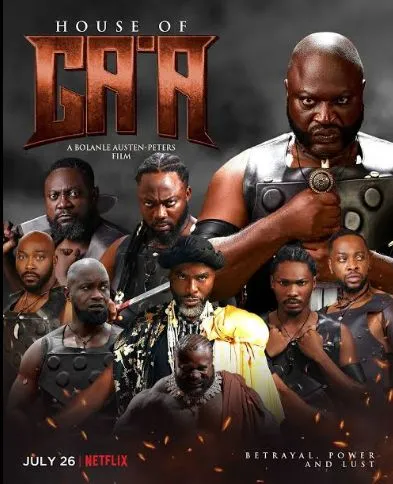I’ve seen different opinions comparing the late Baba Adébáyọ̀ Fálétí’s Basorun Gaa, with the new Jouse of Ga’a (Idile Gaa) by Bolanle Austen-Peter and here’s my opinion after watching the new House of Ga’a.
If you know history and are passionate about preserving Yorùbá culture, you won’t like House of Ga’a when compared with the Baṣọ̀run Gáà movie. Although the Baṣọ̀run Gáà movie from 2004 wasn’t entirely historically accurate either, it was far better.
From the first scene of House of Ga’a, I was already displeased with the use of Persian customs in a Yorùbá war scene. Yorùbá Ọ̀yọ́ didn’t dress like Persians for war. That’s erroneously portrayed.

Also, the Lagos accent in an Ọ̀yọ́ movie makes no sense.
The meaning of Baṣọ̀run comes from Iba-Ọṣọ̀run: Iba (Lord) that does Ọrún (Ọrún is a festival only done by the Baṣọ̀run).
In the movie, they were calling Ọrún Festival as Ọ̀run Festival. Very wrong and misleading.
Also, there was no Asipa as part of the Oyomesi at that time. The Asipa title started in the new Àgọ́ of Ọ̀já and the title was created for the Family of Ọ̀já, who was the lord of Ọ̀já that later became Oyo after the fall of Ọ̀yọ́-Ilé the seat of Old Oyo Empire.
Baṣọ̀run Gáà was produced in 2004, 20 years ago, so the camera quality of the movie is very poor compared to this new Netflix-standard House of Ga’a. Aside from that, I’ll pick the late Baba Adébáyọ̀ Fálétí’s Basorun Gaa over and over again.
Was Ibrahim Chatta a Babaláwo or an Onísègùn?
He was made to represent both, and they are two different things. Many people don’t know, and movies like this are supposed to educate people and not confuse them further about Yorùbá culture.
Ibadan was not supposed to be featured in the movie at all. Ibadan was a war camp for a very long time and became a town after the death of Afonja, so why would Gaa send an ambassador to reside there like it’s a town? Even if people were staying there I doubt if it was recognised as a settlement at that time.
Iba Olúyọ̀lé didn’t settle in Ibadan because his father, (Basorun Gaa’s brother), Olúkùóyè, was an ambassador in Ibadan from Ọ̀yọ́-Ilé. That didn’t happen in history.
Iba Olúyọ̀lé settled in Ibadan because the seat of the Old Oyo Empire, Ọ̀yọ́-Ilé, was destroyed. And Ibadan became the city of warriors and a fortress just like Ògbómọ̀ṣọ́.

They used wrong names too; I thought it was a movie about the family of Baṣọ̀run Gáà.
I love the character of Oyèmẹ́kùn, although none of Gaa’s children had that name according to history.
The son of Gaa with the character of Oyèmẹ́kùn is Òjó Àgùnbánbáru, and he fled to the Ibariba country, not Ilorin. Also, there was no Emir in Ilorin at that time, as the movie portrays.
It was recorded that Òjó Onísekúse, Láderin, Pàsín, Alùgbìn, and Àfọ̀njá ruled in Ilorin before Emir Abdulsalam, Alfa Alimi’s son, became the first emir of Ilorin. Baṣọ̀run Gáà was around during the time of Pàsín as Lord of Ilorin.
Ilorin had its first emir after the death of Àfọ̀njá in 1824. Baṣọ̀run Gáà died in the 1770s.
The new House of Ga’a has good effects, and action, and the video quality is good, but it’s full of blunders and wrong historical information.
“Bí o bá láyà kí o se ìkà, Bí o bá rántí ikú ikú Gáà kí o se òótọ́” (if you are brave, venture into wickedness, but if you remember the death of Gáà, adhere to the truth) is a very popular adage.
Baṣọ̀run Gáà died a very painful death, which is what gave rise to that popular adage, but he was not burnt alive as portrayed in the movie.
House of Ga’a is more of Ààlọ́ than Àrọ́bá.
It’s very good, and I commend the effort, but it is misleading, and for me, it’s 5/10.
Let fiction be fiction; let history be preserved!
The BEST way to support us is by providing funding to enable us continue this good work:
Bank: Guarantee Trust Bank (GTBank)
Account Name: Johnson Okunade
Naira Account: 0802091793
Dollar Account: 0802091803
Pounds Account: 0802091810
Euro Account: 0802091827
Business Email — hello@johnsonokunade.com

